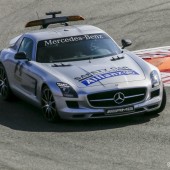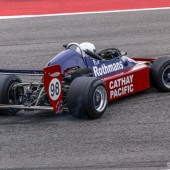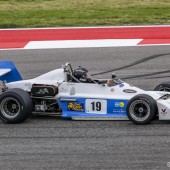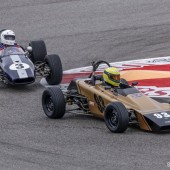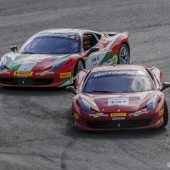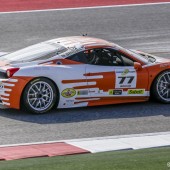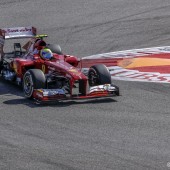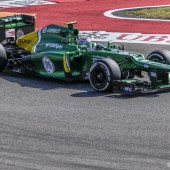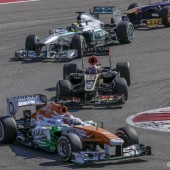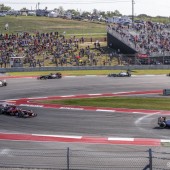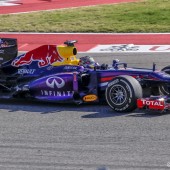
Today’s guest post on switching from Nikon to Canon is by Tatsu Ikeda (Website | Flickr | Facebook | Twitter):
I bought a Nikon D80 in 2008 for a vacation trip, because I simply didn’t own a camera, not even a cellphone one. Looking back, I probably bought it against Canon’s offerings because the Rebels looked pretty low-rent and the 50D was out of my budget. Because the D80 was towards end-of-life, the price was $200 less than its intro. It seemed reasonable and I remember taking hundreds of terrible photos in Argentina with a Sigma 17-70mm f/2.8-4.5 zoom that fell apart inside after a year. (Swore off Sigma zooms after that, but not their primes.)
Fast-forward 60,000 photos to 2012 and I graduated to Nikon’s D800. I shoot events twice a week, EDM Nightclubs and events, a fair amount of food photography, and fashion. I try to stay as generalist as possible, despite it being a poor business strategy. By that time, I purchased 6 lenses for Nikon F mount, all of them full-frame and non-AF-S from various brands, Nikon, Tokina and Sigma. It was quite a surprise to learn that Nikon’s lens mount goes back to the 1950’s while Canon’s only goes to the 1980’s. I’ve read nearly every review about every lens for Nikon and Canon, including rare Contax, Zeiss, and Leica lenses retrofitted for either. Eventually I got over lens mania and settled down into a Sigma 20mm, an uncommon Tokina 28-70mm f/2.8 from Japan, an old Nikon 28-105mm f/3.5-4.5 D, a “push-pull” Nikon 80-200mm f/2.8 D, and a rare auto-focus Tokina 400mm f/4.5. I have a Nikon 50mm f/1.8 D too, but it’s mostly a body cap.
While Canon has lorded over Nikon in the 1980’s, 1990’s, and even 2000’s, I definitely hear of many switchers to Nikon these days. It’s pretty easy to see why. On technical merit, Nikon beats Canon at every price level, except for the 1DX vs D4. Plus, Canon is more expensive. Sure I looked at the 5D Mark III before I bought a D800. But 500 bucks more? No way, especially since all the reviews said the D800 had the best sensor of all time. But I never really tried out a Canon DSLR to be honest, except in stores.
Fast-forward to 2013 and another 60,000 photos when I’m all tucked in and cozy with my Nikon buttons, dials, menus, lens and looks. Got to hand it to Nikon on looks, by the way. They hired Giorgetto Giugiaro as their designer since the F3. If you dare to think a Canon looks better than a Nikon, take a look at a Maserati Ghibli and raise your expectations a bit!
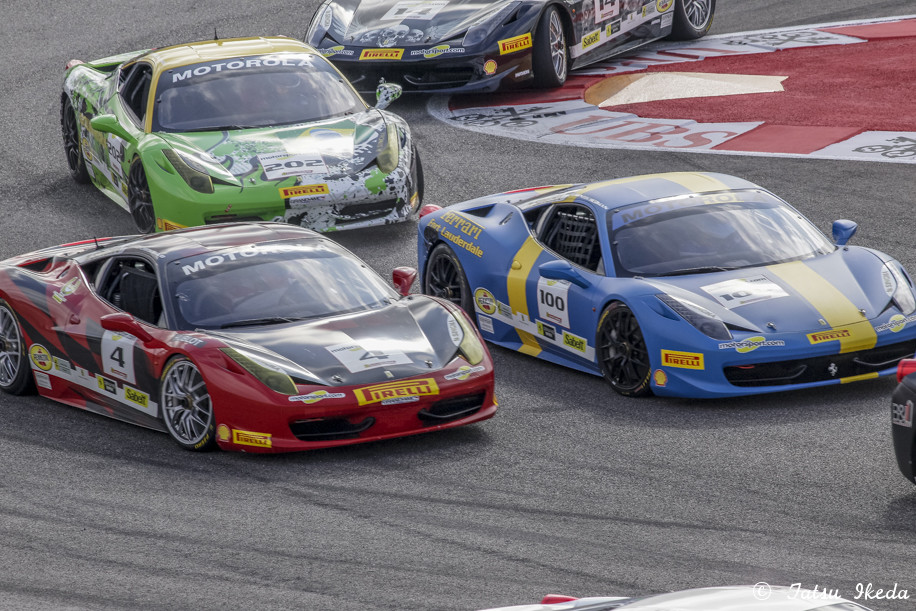

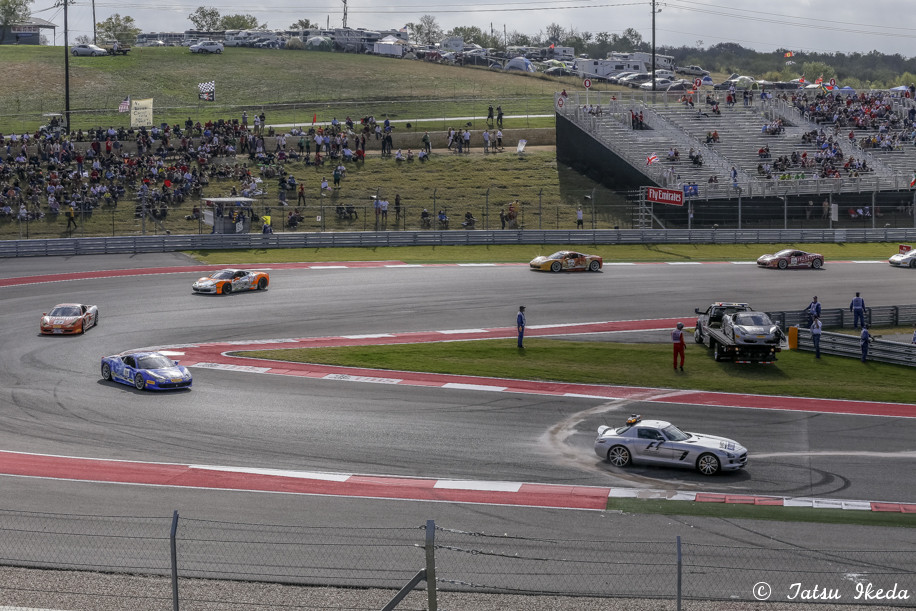
Anyway, I was hired to shoot the F1 or Formula One or FIA Grand Prix Race of America in Austin, Texas this year by Infiniti and dwinq.com. All the photos had to be posted in real-time! Guess what, I needed Wi-Fi and the Canon 6D is the only game in town. Crazy, but true, the 6D is the only full-frame DSLR with built-in Wi-Fi using infrastructure mode. Sure you can have Wi-Fi attachments for Nikon, ($1000 and bigger than a SB-900 in the D800’s case!) but they cannot upload to real internet services at all. They make their own SSID or worse FTP site, which is not just an island; it’s a sinking atoll! Okay, maybe you can see pictures on an iPad, but not what I needed at all.
So, I held my nose and rented a Canon 6D, a 24-70mm f/2.8 USM II L, a 70-200mm f/2.8 IS USM II L, and a 400mm f/5.6 USM L for 10 days with borrowlenses.com. Might as well do it up right and give Canon a chance to make me sell all my crummy cheap Nikon gear, right? I spent $515 or so on the rental. Lenses were awesome, camera body was beat up, not good considering it’s a fairly new model.
The first thing I did and always do is calibrating lenses to the body. My experience with my stable of old cheap Nikon glass was that they are okay out of the eBay box, but once I utilized AF Fine Tune, they became very professional all of a sudden. I calibrated the 6D with the excellent Reikan FoCal desktop program. Thankfully, it was a lot easier to do than my D800 because unlike Nikon, FoCal for Canon is fully automated! Definitely, there’s a win for Canon. I was blown away that Canons will save two values for AF Fine Tune on a zoom lens, one for wide and one for tele. On my Nikon lenses, I literally wrote the AF Fine Tune values on each end of the zoom on post-it notes and have it stashed in my camera bag or not. Paper notes or trying to remember every lens AF Fine Tune number is not easy! The perfect system would have 3 values, far, near and middle and a built-in closed loop system for AF Fine-Tune for contrast, phase-detection, and infra-red AF assist lamps but I can keep dreaming!
Then I just tried to get used to Canon’s menus and methodically went through every single menu item. I’ve heard Canon is more intuitive but to me, Canon arranges their menu horizontally while Nikon organizes vertical, no difference whatsoever. You start thinking the Canon menu system is a lot simpler, until you get to the custom settings and then things get crazy fast with things breaking out into dozens of sub-menus. Honestly, they are both pretty primitive and there is not a clear win on either side. Surely the Nikon D800 has more items in total than the Canon 6D, but they are not direct competitors. It didn’t take long to setup, maybe an hour, hour and a half, but I was annoyed that I couldn’t export the settings to a file on the SD card like Nikon. Well, maybe you can do it, please let me know if I am mistaken.
I did rent and my 6D was a bit sticky but I just didn’t like the buttons and dials. First of all, why were the top plate buttons so small? Also the top plate LCD screen was harder to read than Nikon’s, way harder! In daylight and infuriating at night, the display didn’t have a smart way of being backlighted. You literally have to press the hardest button to press on the camera to light it up, and it times out too fast. Orange versus Green, well, I am not color-blind or anything, but I prefer green, when I see orange I think my skin-tone is off or something and start panicking.
Also, the Canon 430EX II Speedlight had a cheaper feel and definitely less features than my usual Nikon SB-700s. The buttons were much harder to press, tiny and indented, and doesn’t have the commander modes that the SB-700 has, nor the hard gels or even a bounce card. Like, absolutely no extras at all, feel lucky you get (2) LED AF Assist Lamps! It’s more like an expensive SB-600 to be honest, which Nikon doesn’t sell anymore. It did provide more consistent color than a SB-600 however, and that is what truly matters. The 600/580EX II and SB-900 are direct competitors, but some people get annoyed with the radio interference caused by the Canons when using PocketWizard. (I use them a lot, and carrying RF shields would be a hassle.) Otherwise the two “big guns” are pretty much the same, large cumbersome portable flashguns that are way too much money and with too little power for big studio light modifiers. The SB-700 is just perfect for all event shooting and some studio work. The best flashgun bar none, in my opinion. Plus the SC-29 sync cable by Nikon has no Canon equivalent! So Nikon kills Canon on flash, never mind that Nikon was always better with flash metering. Hardware and results-wise, there’s no comparison. I probably disliked the 430EX II the most out of my entire Canon experience. It’s too chintzy. I’d rather get a Yongnuo in all seriousness.
The Canon system of a jog-wheel surrounding an up-down-left-right controller was funny to me, but that’s purely because I come from Nikon. Still, I got messed up on when to use the four-way versus the wheel and that never happened to me on Nikon, even when I was a total newbie. I prefer the twin-wheel Nikon way plus segregated four or eight-way controller, but to each his or her own. (I don’t know why Nikon hasn’t made them clickable like Olympus did, but oh well.) I live and die by the user-enabled center-click zoom feature to check focus and motion blur on Nikon and sorely wished it were available on Canon, but too bad. When you shoot professionally, no whining, you just shoot and shut the heck up.
When I was actually shooting, doing 1500 shots a day on 12-hour shifts, I pretty much enjoyed using the Canon 6D, it shoots beautifully. Ok, the thing crashed on me once and the error message was straight out of blue-screen-of-death, but I turned it off and on and no problem, I lost a few seconds of my life, no big whoop. The two things that pissed me off was “Where is the White Balance button?” and “What is up with this combo AE Compensation and AE Bracketing together in a god-forsaken menu item?” It took fantastic pictures as you can see from the race and its high-ISO performance was shocking good to me. There is quite a bit of conflicting information about who has the better high-ISO performance, but here is the truth, and don’t skim over this paragraph. Nikon’s sensor, err, Sony’s, now available in the Alpha 7 and 7R, definitely bests Canon. I can easily push things up 2 stops on my D800 in Adobe Lightroom and there is no shadow noise that is going to be introduced. Canon on the other hand, well jeez, you can see noise at ISO 400 if you want to in RAW and it cannot be pushed as hard, I would say a stop less. Definitely a big deal since a stop is half the performance. Correspondingly, the dynamic range of the Nikon is going to be better. I know the 5D Mark III has a WB button thankfully, but it and the 6D have similar sensors, so while I am not comparing apples to apples, we know that Canon cannot compete with Nikon’s D800. GOOD LORD!, though, Canon high-ISO absolutely wipes away Nikon’s sensor advantage in the end. Why? It’s magic, I tell you. I would of called Canon’s method “cheating” before, but it’s just magic. When you compare a Canon RAW versus JPG, the difference is astonishing. The noise is just gone, and the detail is acceptable. I teach Adobe Lightroom part-time and have plenty of experience in Photoshop, there is no way I can de-noise like Canon does in-camera, not even with all the time I wanted. Bravo, Canon. I hate to say it, but in the real world, Canon does have better high-ISO, even if the lab tests show otherwise.
When you boil it down to essentials, photography is ISO, shutter and aperture and a lens as everyone knows. But in digital, Picture Style/Control and Highlight Control matter quite a bit, your safety net and film choice, if you will. I always was quite pleased with Nikon’s D-Lighting system and Picture Control, but I knew that Canon had both highlight and shadow controls. Sadly, I was very disappointed with Canon on both the Picture Style and highlight/shadow clipping fronts. First of all, Canon ALO or Automatic Light Optimization is a total sham. It just radically shifts your camera metering and ISO to a point where you can’t even guess proper exposure, and doesn’t do didly to make your shadows better. Actually it’s worse because Canon’s shadows aren’t that great to begin with. In other words, shadows get worse but highlights are total guesswork, as well as mid-tones. Furthermore it cancels Highlight Tone Priority, which is very analogous to Nikon’s D-Lighting, but not as good. It’s not as good subjectively and Nikon gives you 4 levels while Canon only 3 levels. I found Canon’s Picture Styles or Controls or whatever quite garish. The skin tones on “Standard” are just off or too saturated or both. On the 6D, “Neutral” is definitely the way to go, with a bump up the Contrast a bit for a good SOOC look. I shoot “Standard” on Nikon for mostly everything and, yeah, I should shoot Neutral, but darn, Standard is pretty good on Nikon. Can’t say the same for Canon. I do admit, the auto White Balance is better on the 6D than on my D800, and that’s a total embarrassment for Nikon. Yet another draw, but finding the sweet spot on both Nikon and Canon, it’s a ton of work. It just shouldn’t be that hard.
My favorite Canon lens was the 400mm 5.6 L surprisingly, the cheapest of my rentals. The bokeh was really special, and blew away my ancient Tokina lens in that department, but not in sharpness. I bought my Tokina for a couple hundred bucks. The Canon is over a grand, so consider that. (However, my old Tokinas have custom chips which Tokina doesn’t make or service anymore. They usually don’t work well on Nikon, so if you want them, you have to get one that was serviced at some point in the 1990s, good luck with that.) The Canon 70-200mm IS USM II L is the best zoom I have ever used, but I’m sure the Nikon equivalent is equally nice as well. My old 80-200mm D can’t compete but I make do, on a professional level. I didn’t like the 24-70mm USM II L at all, it distorted way too much at 24mm and it flared more than I expected. My old Tokina 28-70mm flares a lot too, but it’s a more reasonable zoom range with less distortion and it’s far more heavier-duty built, even stronger than my 80-200mm D, which Nikon still makes a variant of. Of course, the current Nikon 24-70mm 2.8 VR II G is going to be very similar to the Canon L, but the Canon is somewhat newer so it might have an edge in lab tests that don’t matter. They both extend while zooming, which leads to dust spots. I love that my Tokina 28-70mm doesn’t, so long as I have a filter on. Yay cheap lenses that nobody knows about!
In the end, I’m glad I did a full-on test with Canon, it was a great learning experience, while on a fast and furious job no less. We haven’t even discussed metering, auto-focus or flash exposure, but since the era of face-detection has started, it’s almost irrelevant. Nikon used to rule in all three areas, but the Mark III very easily leveled the playing field. Canon’s ace in the hole is their high-ISO algorithm, however Nikon shooters have no reason to switch other than that, rest assured. I can’t really say one is better than the other! You can only complain here and there about each, they both make great cameras. So that’s a great segue-way to the complaints department, mostly directed at Nikon. The Nikon D610 is every bit better than the 6D except for Wi-Fi and that is Nikon’s foolishness to not deliver Wi-Fi on full-frame. Too bad, because the D610 has the best ergonomics in a DSLR ever made. What a shame, Wi-Fi is so essential in 2013 and I just will not buy any camera without it going forward. I would gladly sell my D800 for a Nikon with real Wi-Fi, but the D5300 would force me to sell my entire lens collection, no way. For crop-sensor, again the Nikon D7100 overtakes the 70D in image quality, but stubbornly, no Wi-Fi. Are you getting the message, Nikon? Finally, is it not ridiculous that Nikon doesn’t have S-RAW, or small RAW? I always shoot JPEG, but even with the latest Mac hardware, full-size RAW is a non-starter on 24+ megapixel cameras, never mind a D800. Canon just makes life easier and it’s close enough in image quality so that’s why Nikon is pitifully behind in sales numbers. It’s a Betamax vs. VHS kind of war and Nikon is losing badly. Wi-Fi, Wi-Fi, Wi-Fi! I’ve tested the 70D’s Wi-Fi against the 6D’s and the 70D’s is less buggy. So this is quite early and evolving, this new-fangled Wi-Fi thing, even for an innovator like Canon, even if Wi-Fi is over 10 years old. Nikon doesn’t have to lose but they have to act fast and faster to consumer and professional trends. Nikon chooses to lose! The dF was an expensive lark and it’s 4 year development cycle is no excuse for being completely oblivious to what’s going on in the world. Listen to your customers and you’ll do a lot better Nikon.
Let’s review and take score.
| Looks: | Nikon | ||
| AF Fine Tune: | Canon | ||
| Menus: | Nikon | (For being more customizable.) | |
| Ergonomics: | Nikon | ||
| Flash: | Nikon | ||
| ISO: | Canon | ||
| Picture Style/Control: | Nikon | ||
| Highlight Protection: | Nikon | ||
| Wi-Fi: | Canon | (2 points for this!) |
I award 6 points to Nikon and 4 points to Canon, an inconsequential difference of opinion. It’s not exactly scientific, but as a working photographer who uses equipment as far as it will go, those were my findings taken as a whole experience from shopping to laying down photos for clients in Lightroom. I’m sure yours would be different, and that’s what blog comments are for! I can definitely see why some shooters would be attracted to Canon. Photojournalists and event shooters would love the punchy SOOC color and seamlessly easy high-ISO. S-RAW makes life easy too. Nobody got fired for buying IBM, as the saying goes. Nikon, with their endless selection of old used glass, is a bit more flexible for the tinkerer and professional trying to squeeze every last ounce of cost, efficiency and performance out of their gear. Studio work couldn’t get better than a D800. Nikon is overall cheaper than Canon counterparts. Like Avis, “We try harder,” said the Nikon engineers. Even though Canon is more innovative on consumer-friendly features while Nikon is more purely technically brilliant, they both make very similar DSLRs for every price point and type of consumer.
Happy Holidays, and please be sure to ask me about Lightroom and Photography lessons if interested, I teach amateurs and professionals alike! I hope you found my in the trenches testing of Canon versus Nikon helpful in your future decisions and please check out my photography at the following websites.
If you have an interesting idea for a guest post, you can contact me here.
